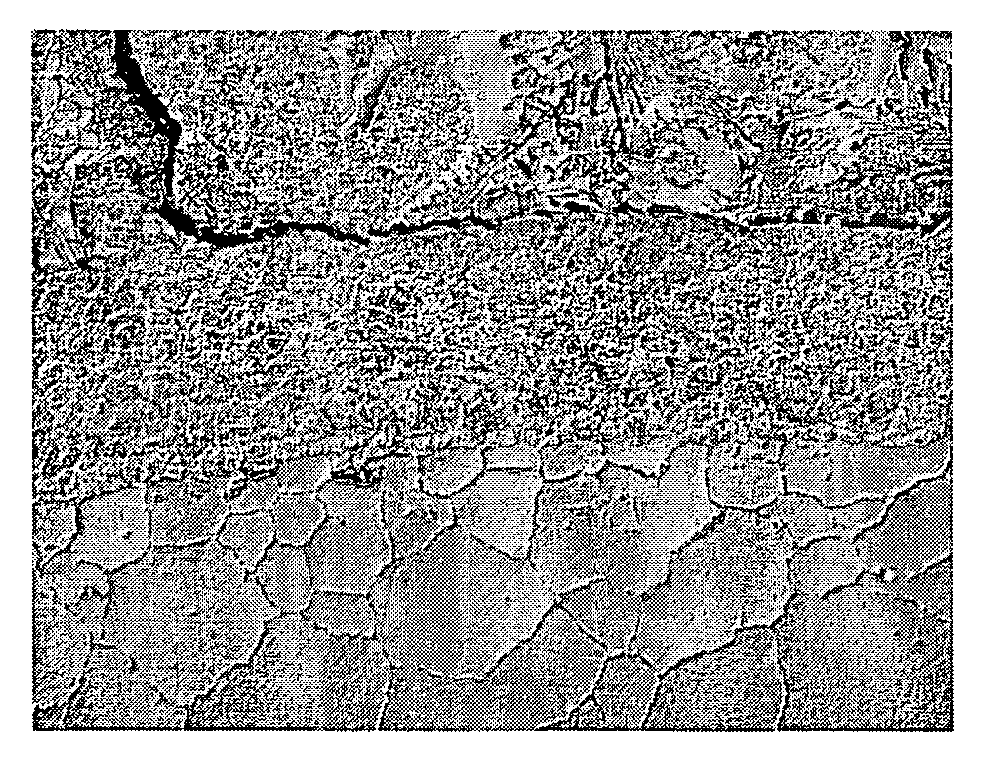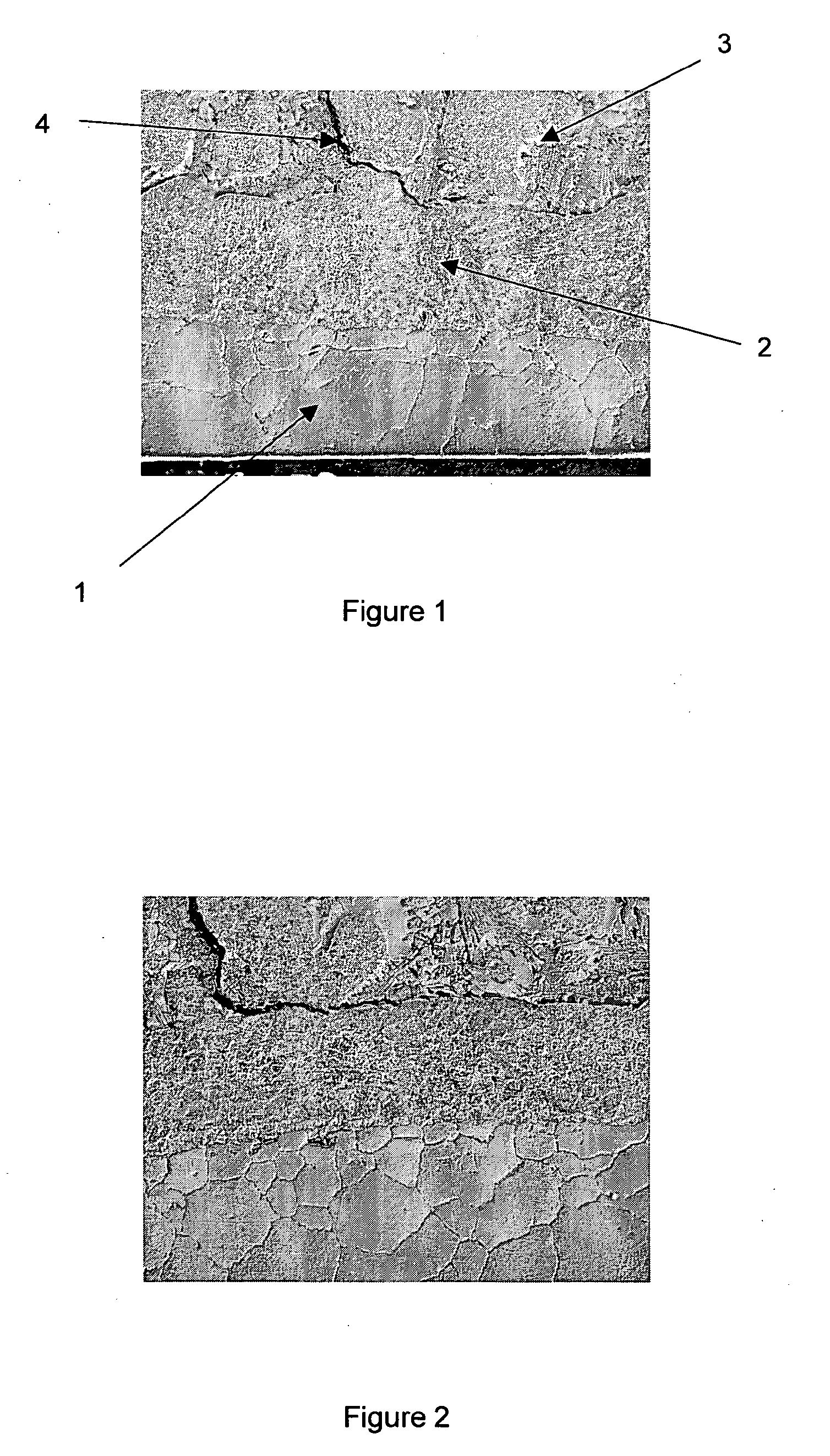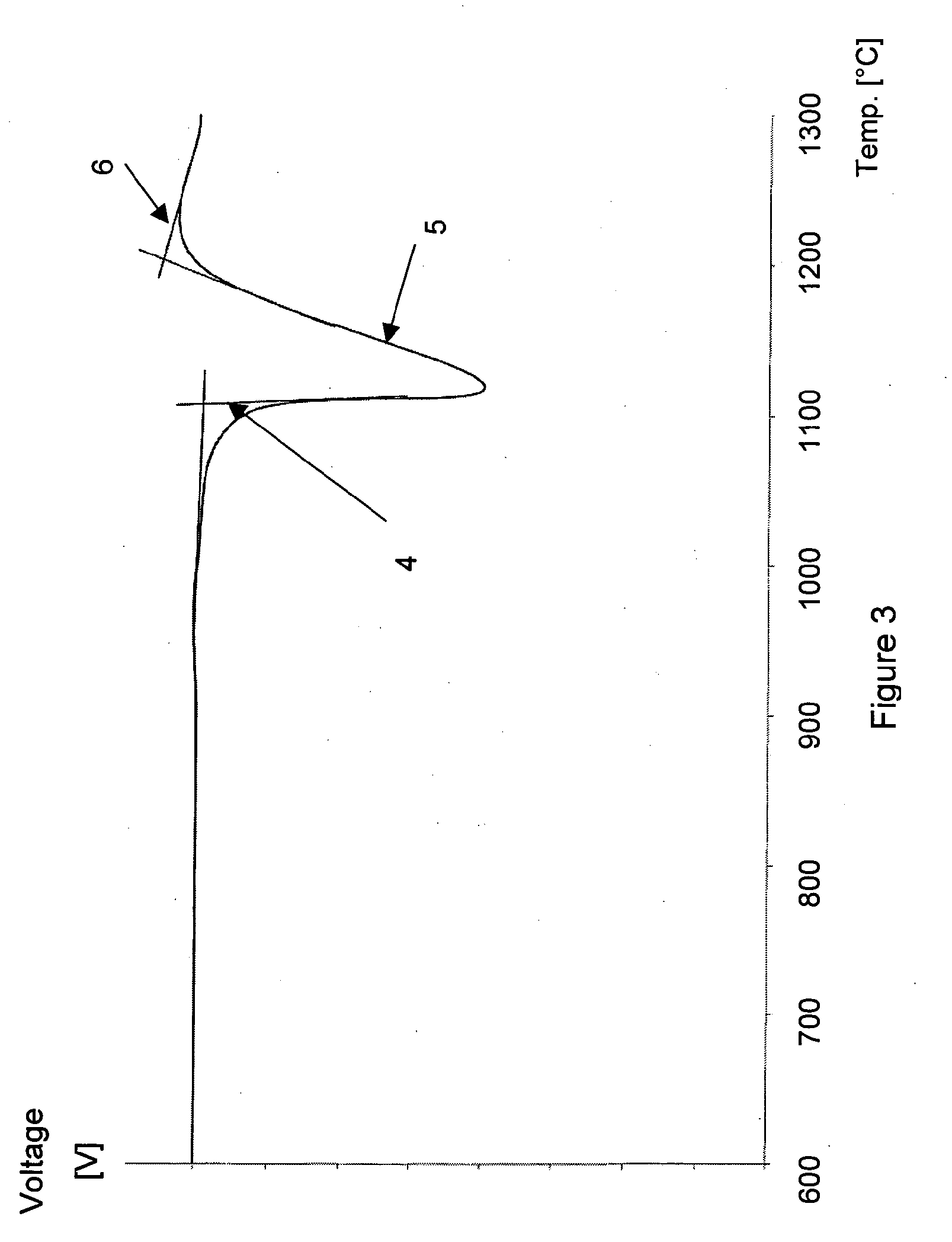Brazing Material, a Method of Brazing, a Brazed Article and a Paste Comprising This Brazing Material
a brazing material and filler material technology, applied in the field of high alloyed ironbased brazing filler material, a brazing method, and a product, can solve the problems of enhancing corrosion problems, limited use of nickel-based or copper-based brazing material, and melting point of coating or brazing material
- Summary
- Abstract
- Description
- Claims
- Application Information
AI Technical Summary
Benefits of technology
Problems solved by technology
Method used
Image
Examples
example 2
[0042]A “bend test” was performed on sample no. 6 and a photo was taken on the result, see FIG. 1. Sample 6 was placed on a plate of base material and heated in a vacuum furnace for at least 10 minutes at approximately 1200° C. The test plate was then cooled to room temperature and a “bend test” was performed. FIG. 1 is showing the base material 1 at the bottom of the photo, a reaction zone 2 above the base material, which reaction zone is a zone where the brazing material and the base material has diffused together. On top of the reaction zone is the brazed material 3. The photo is showing that the bending test created a crack 4 in the brazed material 3, which was expected. The surprising result was that the crack did not pass the reaction zone 2, but instead the crack turned and stopped. To double check the result, a new test was made using sample no. 7 and the same procedure, see photo in FIG. 2. The second test did result with a similar crack, which also was turning away from th...
PUM
| Property | Measurement | Unit |
|---|---|---|
| Temperature | aaaaa | aaaaa |
| Temperature | aaaaa | aaaaa |
| Temperature | aaaaa | aaaaa |
Abstract
Description
Claims
Application Information
 Login to View More
Login to View More - Generate Ideas
- Intellectual Property
- Life Sciences
- Materials
- Tech Scout
- Unparalleled Data Quality
- Higher Quality Content
- 60% Fewer Hallucinations
Browse by: Latest US Patents, China's latest patents, Technical Efficacy Thesaurus, Application Domain, Technology Topic, Popular Technical Reports.
© 2025 PatSnap. All rights reserved.Legal|Privacy policy|Modern Slavery Act Transparency Statement|Sitemap|About US| Contact US: help@patsnap.com



